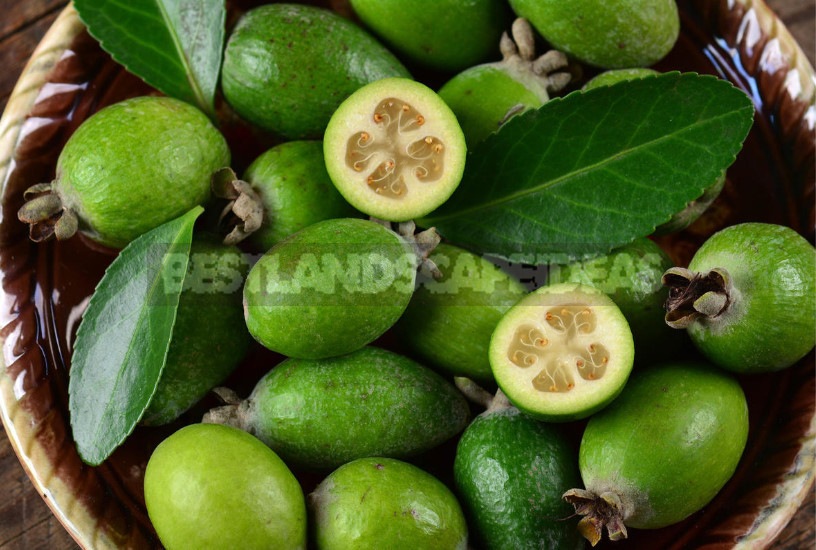
After pineapples, avocados, mangoes and carambola, first in large supermarkets, and then on the shelves of street vendors, exotic green berries with a pleasant name appeared. Feijoa, the homeland of South America (Brazil, Northern Argentina, Uruguay), in a short period of time crossed two oceans and settled in New Zealand and Abkhazia.
Useful property
First of all, it must be said that feijoa berries are very useful. They can be considered a concentrate of vitamins and minerals necessary for the human body, especially in winter.
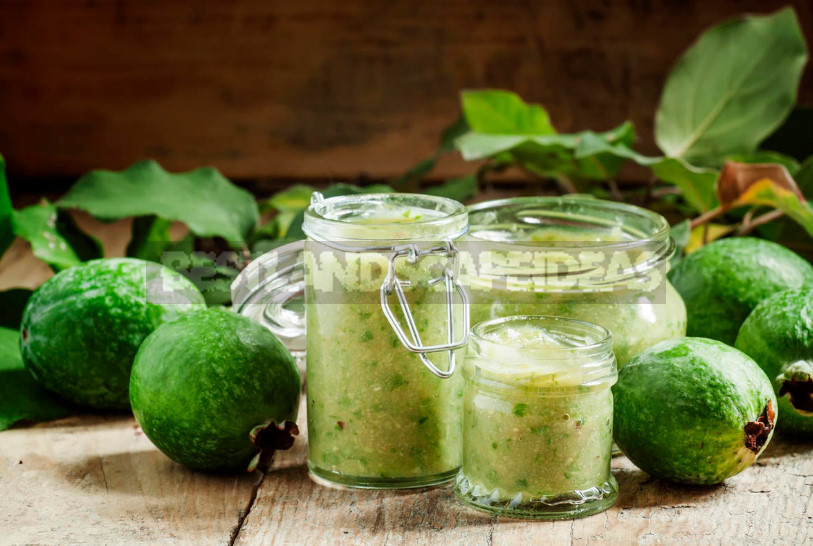
A high content of B vitamins and PP, a lot of potassium, manganese and antioxidants is a big plus, but our native currants, cranberries and rosehip are not inferior to exotic fruits. But the fact that feijoa berries grown on the seashore have an iodine content of up to 35 mg per 100 g (3.5 oz) is simply amazing. It’s more than seafood! However, plants grown far from the sea produce fruits with a significantly lower iodine content – up to 9 mg per 100 g (3.5 oz) of product.
Use
Thanks to an interesting combination of useful qualities, these exotic berries are used in various fields. It is used in cooking, cosmetology, folk and scientific medicine, wine and candy fillings are made from fruits. One of the biggest advantages of feijoa is that the berries can be frozen and then cooked without losing flavor or worsening the creamy-flavored flesh.
Cooking
Feijoa is a versatile fruit used in cooking in the preparation of cakes, desserts, sauces, jams and jellies, in some countries it is also served as a side dish to meat dishes. It is best to eat fresh berries collected ripe. In this case, you will get the maximum amount of benefit and pleasure. Cut the berry in half across and select the juicy flesh with a small spoon. Very tasty!
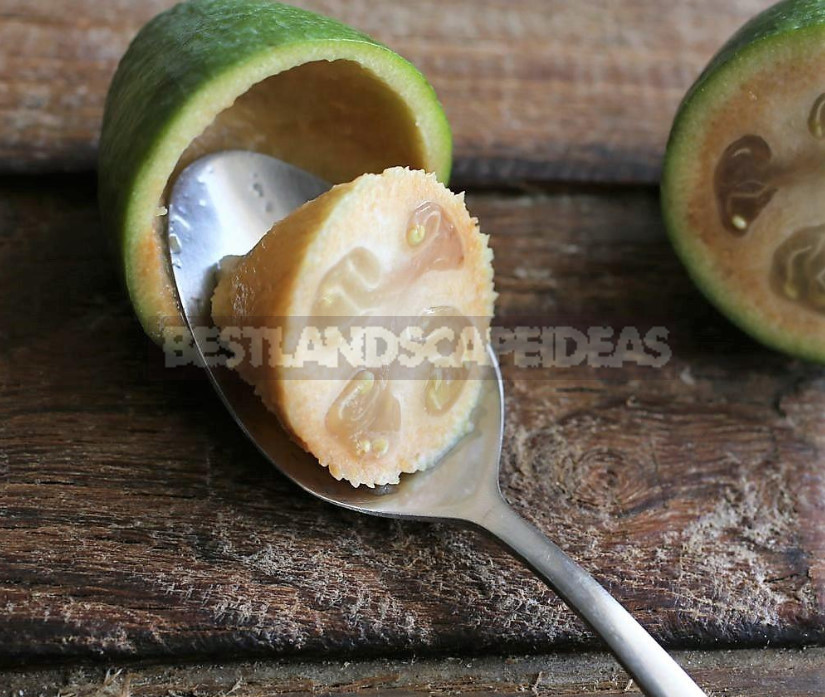
Given that feijoa is stored for a very long time, many recipes for blanks have been invented. By and large, they are divided into implying heat treatment and without it.
The easiest way to stock up on vitamins is to twist the washed fruit in a meat grinder or grind it with a blender and mix it with sugar in a ratio of 1:1. Transfer the mass to clean, dry jars, close with plastic lids and store in the refrigerator.
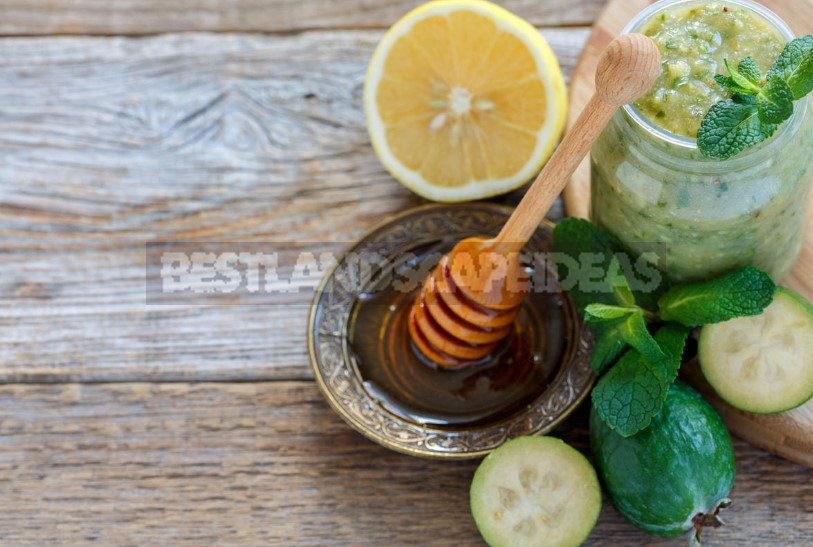
It is even more useful to take natural honey instead of sugar and add lemon to the mixture. For 1 kg (2.2 lb) of feijoa berries, you will need 1 cup of honey and 1 small lemon. In feijoa, cut off the tips of the sepals along with the lemon and cut it into small pieces, removing the seeds. In a blender (or with a meat grinder), the berries and lemon are crushed, then honey is mixed into the mass and laid out in cans. This raw jam should also be stored in the refrigerator.
From feijoa, you can make lemon and ginger jam with a mind-blowing exotic taste. Berries can be used in salads, both fruit and vegetable, seasoned with vegetable oil, yogurt or sour cream. All citrus fruits, dates, raisins and nuts are combined with feijoa. From vegetable salads, it is especially good to mix feijoa, boiled beets and nuts with vegetable oil or sour cream.
Cosmetology
Feijoa is successfully used in home cosmetology, as it contains a lot of antioxidants and catechins. Face masks improve the skin, cleanse it and nourish it.
The anti-aging mask is made from feijoa and sour cream. To do this, 2 berries are peeled and kneaded into a pulp, add 1 tablespoon of sour cream and mix well. Apply the mask to the face and neck not very thickly and leave to dry partially.
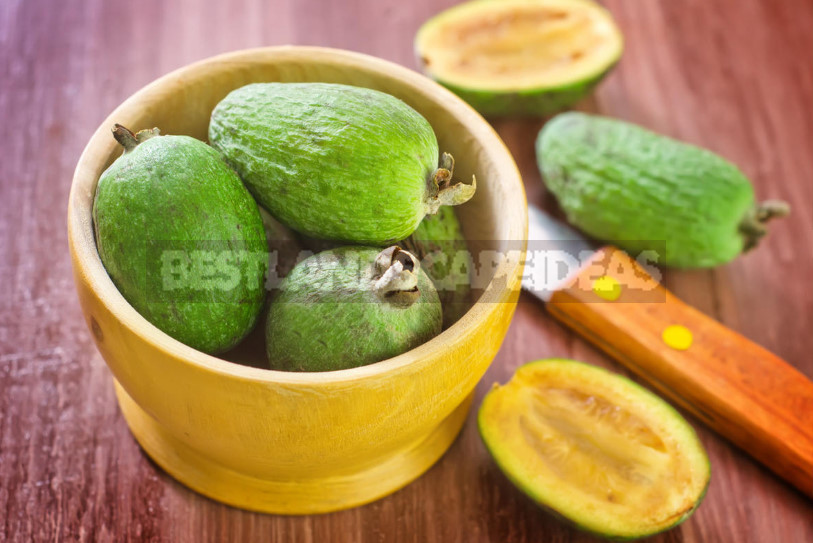
The cream prepared according to the following recipe softens and nourishes the skin of the hands well. In equal proportions (for example, 1 teaspoon), mix the feijoa pulp, olive oil and honey. Massaging the mass is applied to the skin of the hands and left for 15-20 minutes, then washed off.
Medicine
Supporters of both traditional and scientific medicine recognize the exceptional health benefits of feijoa. Here are the six main beneficial aspects of these berries:
- high fiber content stimulates peristalsis, which facilitates digestion;
- high potassium content (and low sodium content) promotes normalization of blood pressure in hypertension;
- the combination of vitamins B6, C with potassium reduces the risk of heart disease;
- high content of manganese and vitamin C improves the body’s antioxidant defense;
- some components that are part of feijoa (for example, folic acid), improve brain function, have a good effect on memory;
- the high content of easily digestible iodine helps to make up for its lack in deficient conditions, including in diseases of the endocrine system.
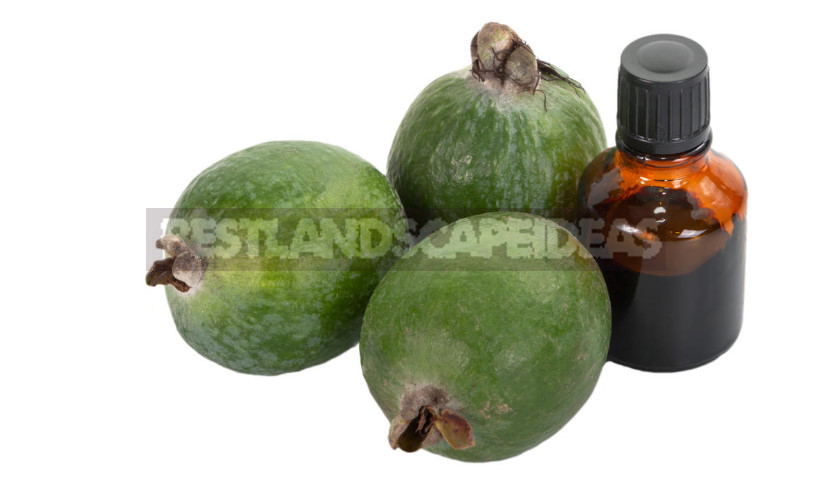
There are also contraindications to the use of feijoa. First of all, this applies to patients with hyperthyroidism. The attitude of doctors to the use of this berry by diabetics is ambiguous. Some believe that feijoa does not harm and has an excellent variety in the menu, others are categorically against the inclusion of this berry in the diet of patients with diabetes. Allergic reactions to the use of feijoa are extremely rare, but people who are prone to an acute reaction to exotic products should be careful.

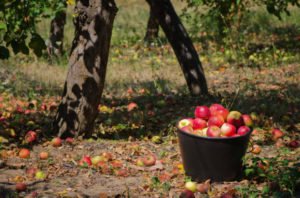


Leave a Reply